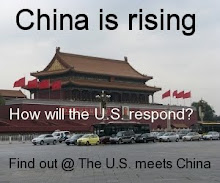Sunday, July 25, 2010
7:07 PM | Posted by
Dave Reidy |
Edit Post
The always-superb Rajiv Chandrasekaran has a story in the Washington Post about progress in Afghanistan, comparing the lack of it in Marja (a "bleeding ulcer," as General McChrystal famously said) with the relative tranquility and prosperity of Nawa. Both hamlets are similar demographically and geographically, but while Marja continues to hemorrhage Nawa is creeping forward.
Both were stricken by the Taliban insurgency four years ago. And over the past year, both have been treated with America's new counterinsurgency formula: Each community has been flooded with U.S. Marines and Afghan security forces, at troop levels that meet or exceed what counterinsurgency theorists prescribe. Each has received a surge of cash and civilian experts in an effort to provide public services, rebuild infrastructure and dole out basic economic assistance. Each has been described as a priority by the central government in Kabul. So why did all this work in one but not the other?
| Photo by Lance Cpl. Tommy Bellegarde |
Unfortunately, this is the wrong question. It rests on the assumption that the U.S. did something right in Nawa but something wrong in Marja, and the only thing to do is discover that error. At a deeper level, the assumption is that all events are conclusively influenced by U.S. policy - we can do it right or do it wrong, but ultimately we are the ones determining the outcome. I find this idea troubling. Accepting that the U.S. military is the decisive factor in the near-term future in Afghanistan means neglecting local relations and politics, national governance (or the lack thereof), and a host of other factors, not the least of which is the most fundamental of all military strategy - the enemy gets a vote.
Chandrasekaran almost hits on this point, but quickly loses the thread:
But the residents also emphasized that the Taliban fighters left of their own accord. "They chose to flee from here," said one shopkeeper. "They drove away as soon as the Marines arrived."In other words, perhaps the success in Nawa was not the result of superior American tactics, but rather of a Taliban miscalculation. Their failure in Nawa may have been part of the reason the Taliban refused to flee Marja; an attempt to avoid repeating the mistake.
So what does this mean for U.S. operations in Afghanistan? It's a reminder that actors and events that are not part of the plan influence the outcome, sometimes decisively. As the Bush Administration learned in the aftermath of the fall of Baghdad, unplanned events occur and must be dealt with, even if that means discarding the original blueprint. COIN doctrine cannot be implemented according to any book, and the notion that there is a "right" way to do COIN which guarantees success is a fallacy. Perhaps General Petraeus has taken a similar lesson from recent events. He has reportedly decided to scrap the invasion Kandahar, calling the current plan "not an appropriate model." Kudos to P4 for making the right call, and hopefully this is only the first of many.
Subscribe to:
Post Comments (Atom)
Share This! (the gift that keeps on giving)
Latest Analysis
D&D Contributors
The D&D Vault
-
▼
2010
(168)
- 10/17 - 10/24 (2)
- 10/10 - 10/17 (1)
- 09/26 - 10/03 (2)
- 09/19 - 09/26 (2)
- 09/12 - 09/19 (1)
- 08/29 - 09/05 (1)
- 08/22 - 08/29 (2)
- 08/08 - 08/15 (1)
- 08/01 - 08/08 (1)
- 07/25 - 08/01 (2)
- 07/18 - 07/25 (3)
- 07/11 - 07/18 (2)
- 07/04 - 07/11 (5)
- 06/27 - 07/04 (2)
- 06/20 - 06/27 (9)
- 06/13 - 06/20 (3)
- 06/06 - 06/13 (1)
- 05/30 - 06/06 (3)
- 05/23 - 05/30 (1)
- 05/16 - 05/23 (1)
- 05/09 - 05/16 (2)
- 05/02 - 05/09 (2)
- 04/25 - 05/02 (4)
- 04/18 - 04/25 (6)
- 04/11 - 04/18 (8)
- 04/04 - 04/11 (8)
- 03/28 - 04/04 (9)
- 03/21 - 03/28 (5)
- 03/14 - 03/21 (2)
- 03/07 - 03/14 (5)
- 02/28 - 03/07 (8)
- 02/21 - 02/28 (8)
- 02/14 - 02/21 (10)
- 02/07 - 02/14 (13)
- 01/31 - 02/07 (8)
- 01/24 - 01/31 (11)
- 01/17 - 01/24 (8)
- 01/10 - 01/17 (6)



.jpg)
1 comments:
In answer to the first question, a teeny weeny bit.
Post a Comment